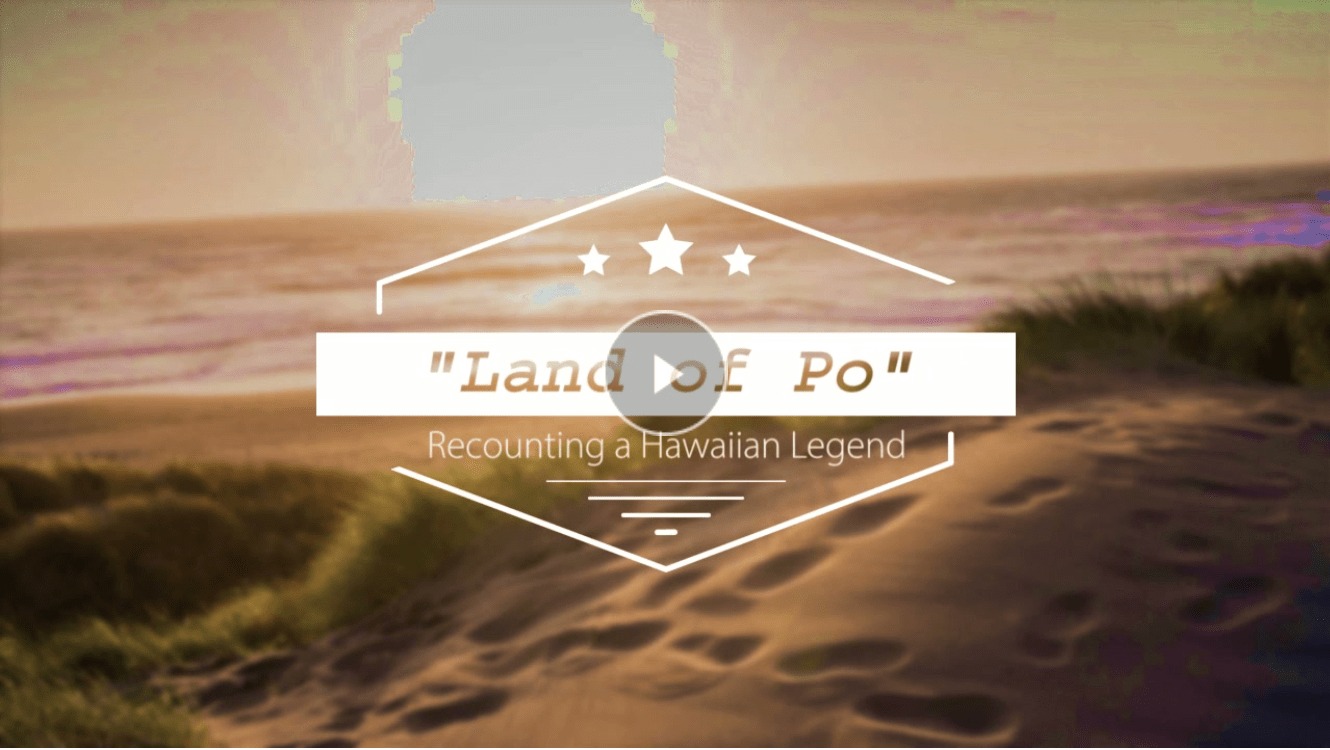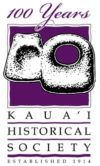“Land of Pō” – recounting Hawaiian Legend
/Synopsis:
This video was shot several years ago while hiking with friends on Kauaʻi. We are on a ridge above the Nāpali Coast with a good view of the island on Niʻihau. The view reminded me of a Hawaiian Legend which makes mention of a mystical land located at the bottom of the sea, between where we were currently standing and the island of Niʻihau. My memory of where I had read or heard the story was fuzzy, as were many of the details.
I did my best to locate the source from which the story came with no luck. Instead I found multiple myths & legends containing components of the story I am telling. It’s possible that I combined multiple tales into my own conglomerate version. More important than specifics (in my opinion), are the general concepts related from a good tale – and the subsequent thoughts, feelings, and universal “life lessons” they inspire. A crucial component in many storytelling traditions includes space for filtering the story through one’s own memory & perception. It’s worth noting that this seems to be an acceptable aspect of the Hawaiian storytelling tradition as well. That said, I apologize in advance for any gross inaccuracies.
Clarification on some Points:
- Early Hawaiians came to the mountains to gather red & yellow bird feathers (for making elaborate feather cloaks called ʻahuʻula), to harvest koa (for making outrigger and voyaging canoes), to gather medicinal plants, and for spiritual reasons. The generally did not stay there for extended periods of time.
- In the story I heard the warrior lived in a village inside Waimea Canyon, somewhat isolated from the main villages along the coast. The woman he fell in love with lived in the village of Waimea on the coast.
- Men & Women not eating together was just one type of kapu among many, albeit a very important one. The kapu system was the religious law system that ruled over almost every act of Hawaiian life. It consisted of thousands of rules which identified what people could and could not do. The kapu system was based on beliefs about mana (spiritual power).
- “Forgetting to feed him” may refer to offering food and/or other matrimonial offerings. Since men & women didn’t eat together it’s unlikely that she would be expected to serve him food, in the traditional sense.
- Interesting side note – in 1819, ‘ai kapu was overthrown – men and women eating together was the first public act in abolishment of the kapu system by Queen Kaʻahumanu (one of the late king Kamehamehaʻs more than 20 wives, and queen regent at the time) and Keopuolani (Kamehamehaʻs sacred royal wife, mother of the current king, Liholiho). At the time women and men were also not permitted to cook food in the same fire or eat from the same calabash (‘ai kapu); additionally, women were not permitted to eat pork, bananas, and coconuts. Though many were outraged by this sudden break with long held beliefs & customs, it came as a relief to many makaʻāinana (“commoner”, general Hawaiian population) who were often subjected to harsh, at times unjust, punishment by the intricate kapu system. It was at great personal risk that Kaʻahumanu and Keopuolani made this bold declaration to the royal court and the young king, Liholiho (“Kamehameha II”), as death and beatings were common punishments for violating kapu.
- In the video I make reference to “the land of Pō”. In the version I heard this land was located on the bottom of the ocean, between Kauaʻi and Niʻihau. Pō is referenced in many ways, for the purpose of this story it can be seen as an “underworld” or “realm of the gods”. Because I was not sure if this was the correct way to reference it -“the land of Po”- I did some research to try to find the story I had heard. Try as I might, I could not find an exact reference to the story I am telling. My research was unexpectedly rewarded by stumbling onto a treasure trove of Hawaiian myths and legends – all of them fascinating and reflective of the deeper Hawaiian cultural knowledge that goes beyond simple words. Click here to check out Pō stories from the UH Manoa Archives.
- I speak of her soul getting smaller and smaller as they ascend towards the surface, pulling their way up a long rope, further and further from the land of Pō at the bottom of the sea. I find it interesting that ascending from the depths would change the size of something as abstract as a soul. I can imagine slowly pulling up to the safety of the surface on a long rope. For me it conjures up the image of pulling crab and lobster traps from the bottom of the ocean via a long rope (often slowly, so the crab doesnʻt realize what is happening and try to escape). It also brings to mind the changes in pressure that happen while freediving in the ocean – how the pressure of depth causes contraction, then gradual expansion as you near the surface (the opposite effect on “souls” accustomed to the depths perhaps). Finally, I like the imagery of the specially made coconut shell halves as a “soul capturing device”!
- I was unclear about the purpose of warriorʻs mele (song or chant, sometimes accompanied by, or offered as, prayer). He is singing them next to her lifeless body to coax her soul back into it.
- Here’s a link to versions of similar Hawaiian legends which involving heartbroken lovers, These stories take place with different characters on the island on Maui and Hawaiʻi. The book Legends and Myths of Hawaii: The Fables and Folk-Lore of a Strange People, by David and Rollin Mallory Daggett also contain related Pō stories.
The meanings of Pō, po-, and pō-:
Initial results yielded a literal translation of simply “night”. Digging deeper, I found references to “the darkness”, “night/period of the gods”, and “the chaos of formless creation”.
Going deeper still, I found the many poetic definitions of pō listed below – used a stand-alone word or as a prefix (po- or pō-) in the many Hawaiian words flavored by it’s meaning. Once again I am blown away the meaning and poetry contained in Hawaiian words, in this case only 2 letters!
These final references come from the Hawaiian Dictionary contained on the website: www.wehewehe.org:
[on a related side note, here’s the similarly multifaceted poetry of the word wehewehe: 1. vt. To explain. Cf. puke wehewehe ʻōlelo. Wehewehe ʻana, explanation, definition. 2. Redup. of wehe; to unsaddle or unharness, as a horse; to pull growing taro stalks slightly apart so as to strengthen the corm. 3. (Cap.) n. Name of a star (no data).]
1) po-
Same as pō-. See poale, pohole, pokaʻi, poluhi.
2) pō-
Time of, state of. See below, especially poʻeleʻele, pōhae, pōhihi, pōhina, pōʻino, pōkaʻa, pōkaʻo, pōlena, pōlewa, pōluku, pōmaikaʻi, pōnalo, pōniho, pōniu, pōpilikia, pōule. Also po-.
3) pō
1. nvs. Night, darkness, obscurity; the realm of the gods; pertaining to or of the gods, chaos, or hell; dark, obscure, benighted; formerly the period of 24 hours beginning with nightfall (the Hawaiian “day” began at nightfall) Fig., ignorance; ignorant. Cf. Halāliʻi, Pōʻakahi, Pōʻalua. Hōʻike a ka pō, revelation from the gods [as in dreams or omens].Inoa pō, name suggested for a child in a dream. Mai ka pō mai, from the gods; of divine origin. Kāne o ka pō, wahine o ka pō, husband of the night, wife of the night [spirit lover: it was believed that a child born of such a mating might resemble an eel, lizard, shark, or bird, or might have supernatural powers; sometimes death or sickness followed nightly visits]. Nā pō o ka mahina, days [lit., nights] of the month. Pō ʻahia kēia? What day of the week [or month] is this? Pō nui hoʻolakolako, the great night that supplies [the gods revealed their will in revelations and dreams at night]. Pō pouli ʻaʻaki, a night so dark it bites with the teeth. Pō i ka lāʻau, darkened by the tree. Ua pō, it’s late (not necessarily night, but usually said if one is in danger of not being home by dark]. Ua hana māua ā pō ka lā, we worked until night; lit., until the day darkened. Ua hana māua ā ao ka pō, we worked until daylight; lit., until the night lighted.
More Information: can be found on the larger umbrella site Ulukau: www.ulukau.org, of which the www.wehewehe.org site is a part of. I highly recommend you check out these two sites, they contain multitudes of traditional Hawaiian knowledge! Click here to search keywords, such as Pō, contained in popular Hawaiian myths & legends.








